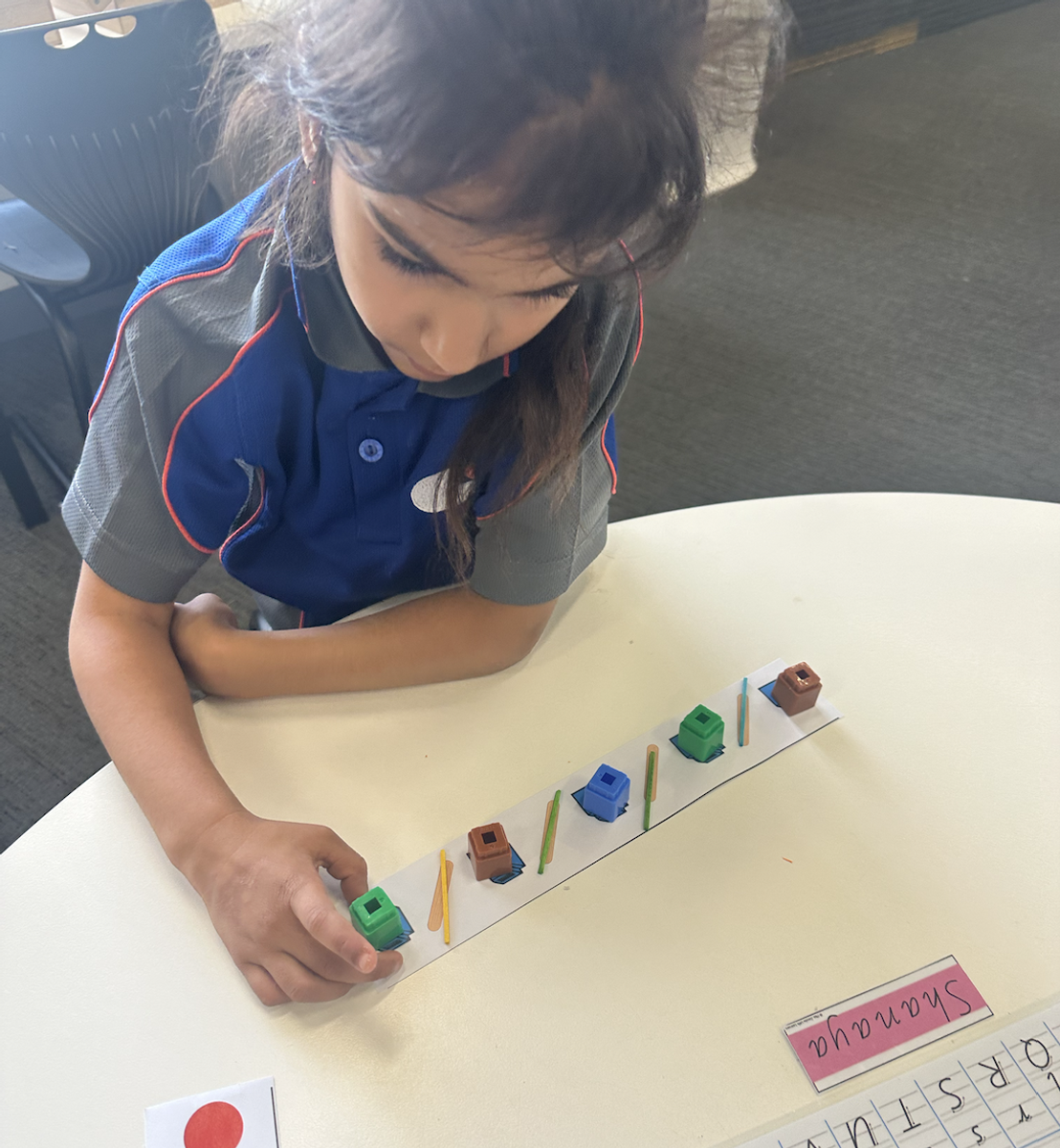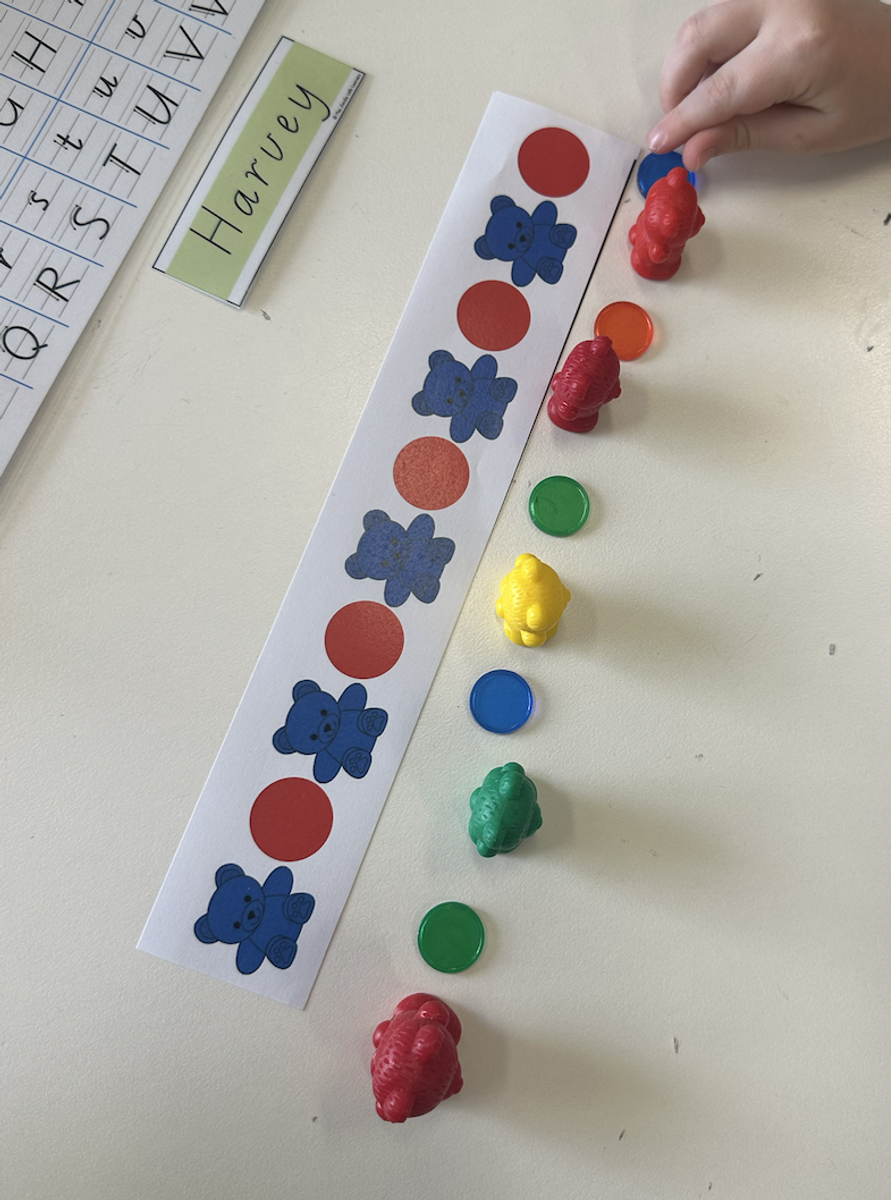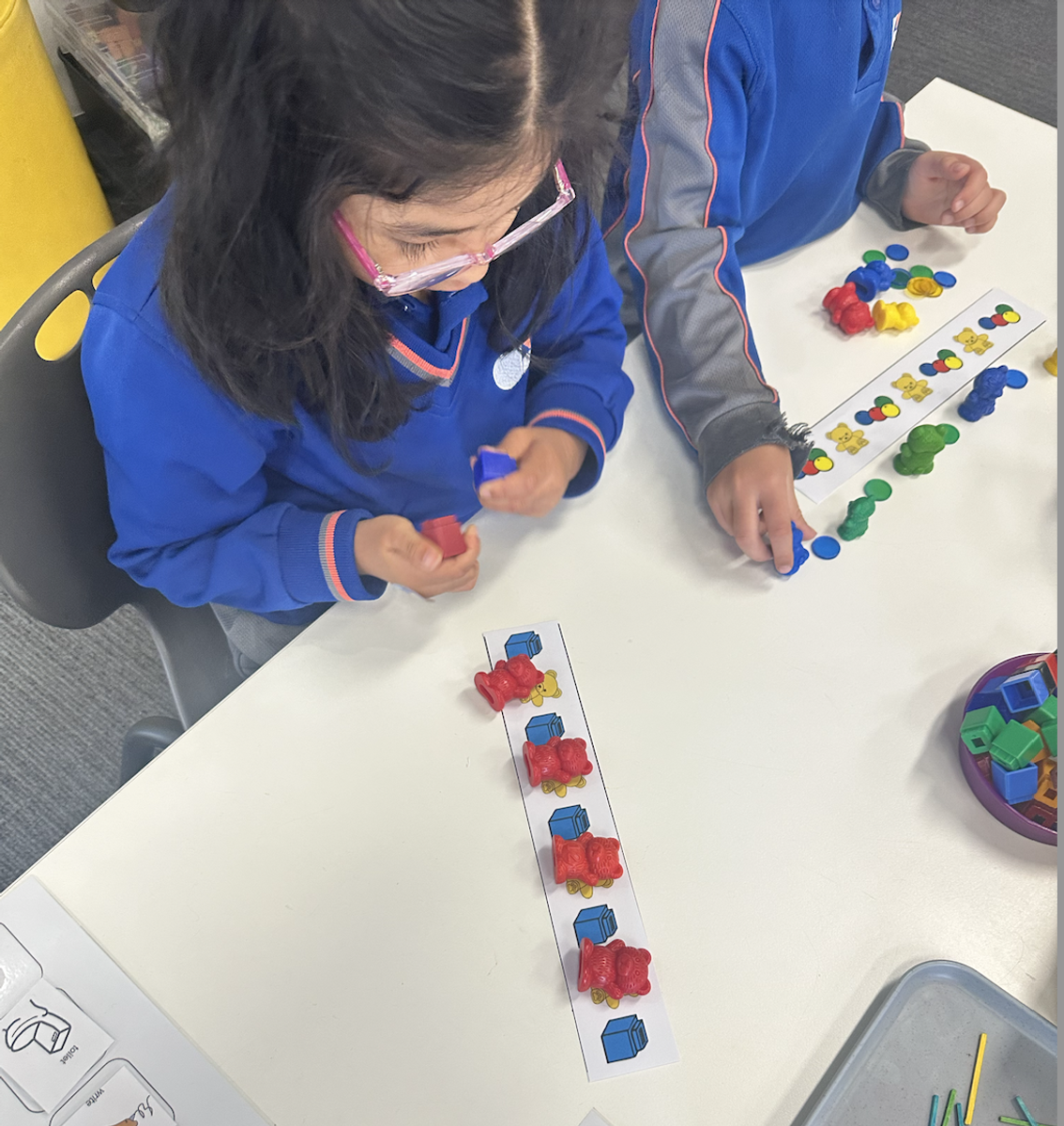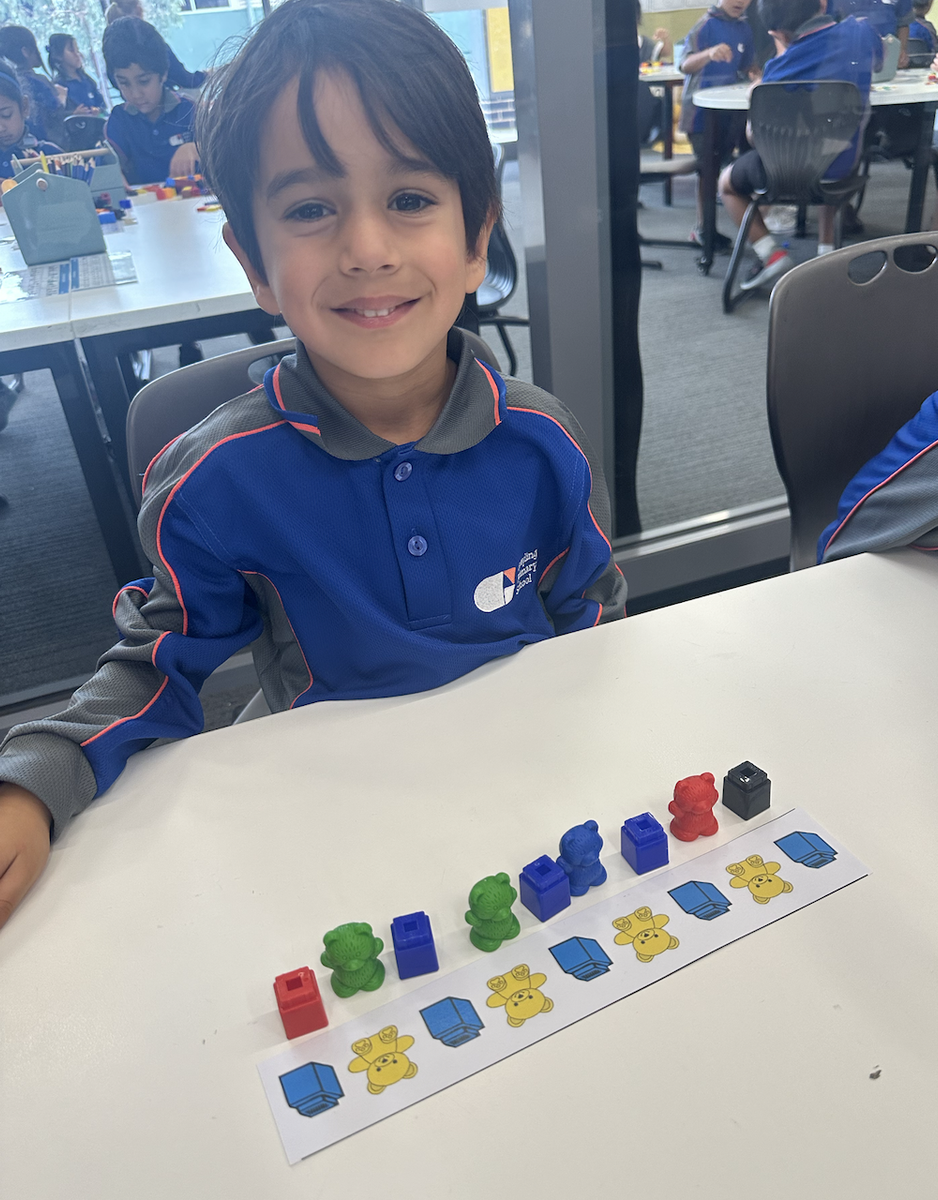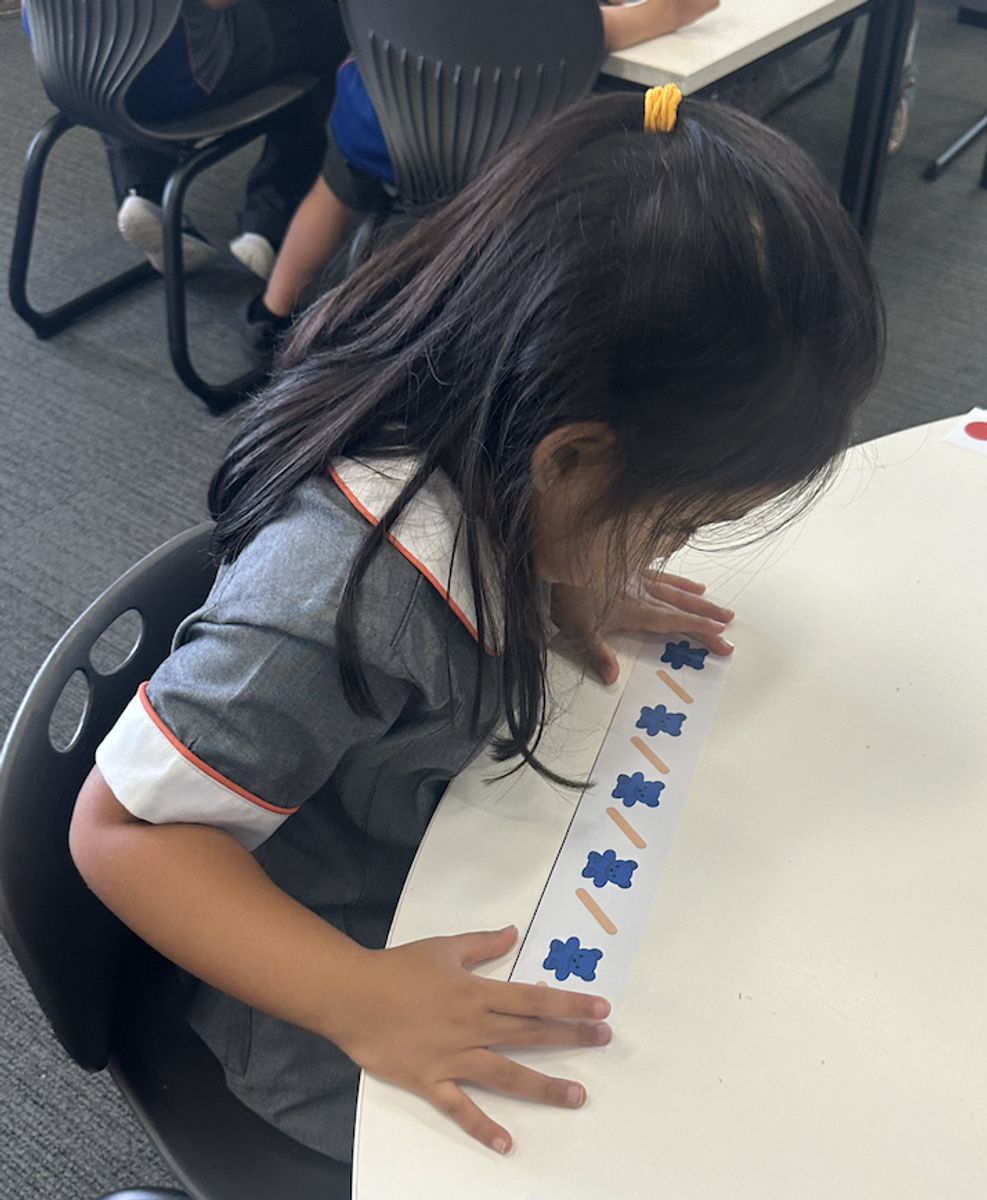Prep
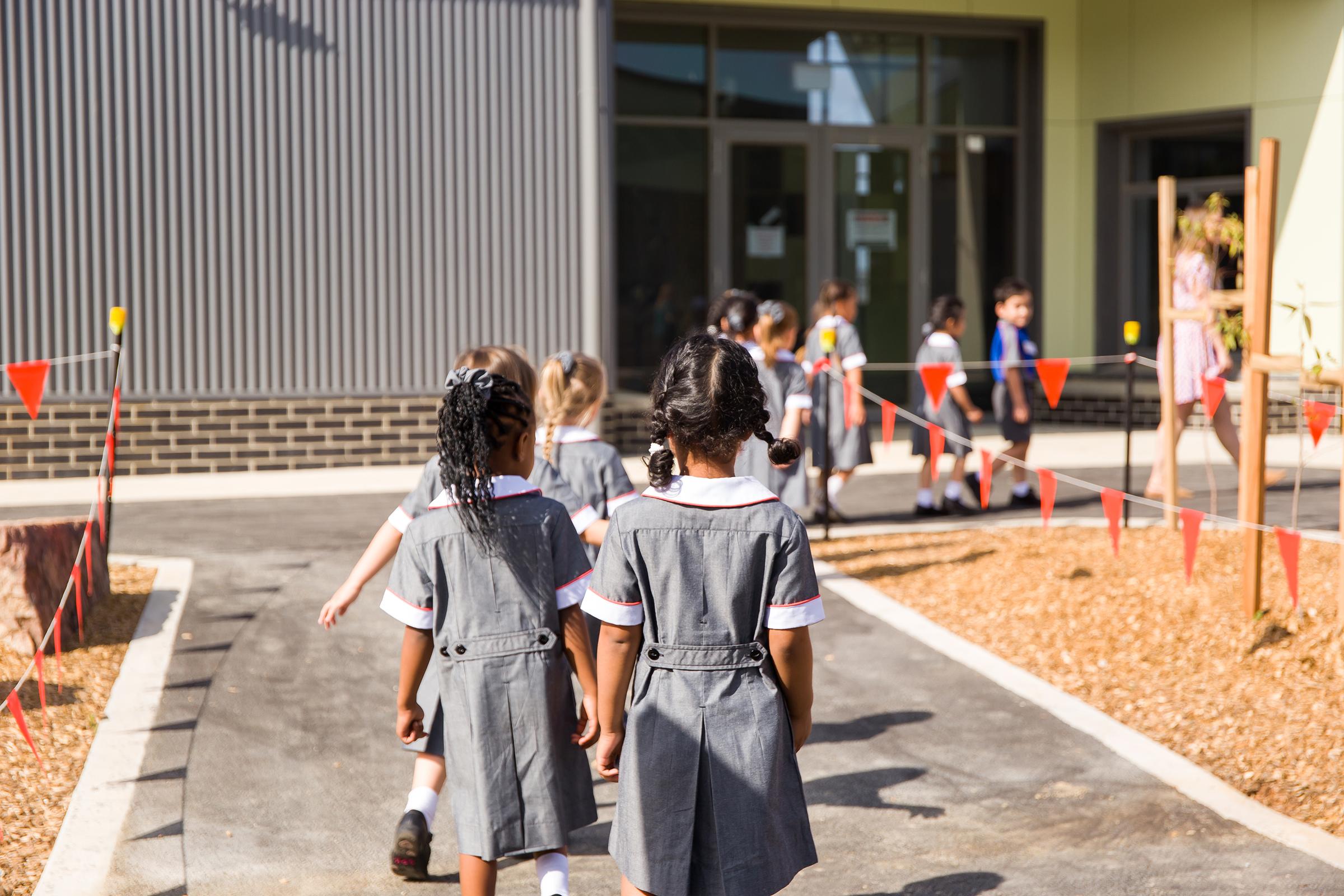
Maths
This week, the Prep students have begun exploring a new Maths topic—patterns! To kick off the term, they have been diving into the fascinating world of patterns and discovering the various ways they can be represented. From shapes and colours to objects and numbers, patterns are truly everywhere!
The students have thoroughly enjoyed engaging in hands-on activities that not only enhance their mathematical understanding but also spark their creativity. Using a variety of resources, they have created and identified two-part patterns, such as alternating colours, shapes, or objects. These activities have encouraged teamwork and problem-solving, as the children collaborate to explore the endless possibilities of patterns.
Some of their favourite resources for creating patterns include blocks, counters, and ice pop sticks. By using these materials, students can touch and manipulate the items to see how patterns work, making the learning experience both fun and engaging.
The excitement in the classroom has been contagious as students share their pattern creations with one another. It has been wonderful to watch their confidence grow as they experiment with different combinations and techniques, whether they are building patterns with shapes or using colour sequences.
As the week continues, we eagerly anticipate how the Prep students will deepen their understanding of patterns and begin to notice them in the world around them. We can't wait to see where this pattern adventure takes us next!
Reading
During Reading, students have been exploring the world of syllables and rhyme! Through a variety of activities, they are learning how words can be broken down into smaller, rhythmic parts, which is helping to improve their reading skills. The students have been clapping out syllables in different words and identifying rhyming words using picture prompts. They have enjoyed participating in whole-class activities, creating their own rhyming pairs, and playing games that challenge them to find words that sound similar. By recognising patterns in sounds and syllables, the students are building a strong foundation for phonemic awareness. Students will soon begin exploring letter and sound recognition as well as letter formation for the letters ‘m’ and ‘s’.
Writing
Our Prep students have been busy building their early writing skills through fun and engaging activities! They have been learning how to hold their pencils correctly and trace with confidence, helping them develop strong fine motor skills. By practicing tracing lines, shapes, and letters, our young learners are strengthening their hand control and coordination, setting a strong foundation for future writing success.
Another exciting focus has been learning to build and write their names. Students have been using individual letters to form their names, tracing them carefully, and even copying them to improve their recognition and writing abilities. These activities not only help with letter formation but also foster independence and confidence in their early literacy journey. Well done, Prep students—we are so proud of your progress!
Integrated
We are continuing to explore and identify the different stages of being ready to learn and how to identify these on a scale. We are using our ‘Zones of Regulation’ to better understand how to get ourselves into a place where we are ready to learn and all of the strategies that we have available to do so. Students are making connections between colours and the zones, for example red denotes feeling angry, frustrated or afraid and green is happy, calm and focused.
Respectful Relationships
During respectful Relationships, students are learning how to name some emotions that we experience and how those emotions are expressed through non-verbal body language. Understanding how emotions can be displayed on our faces or in how we hold our bodies - frowns on our faces and arms crossed when feeling angry or frustrated - helps students learn to communicate for effectively as well as interpret the feeling of others.
Culture
In culture this week we are learning about where Welcome Circles originated and for what other purposes they can be used. Indigenous cultures have used Welcome or Yarning Circles in their communities to solve problems, share stories and celebrate with each other. The students are learning how we have adapted them for our own purposes in our morning routines but how broad their uses can be.

